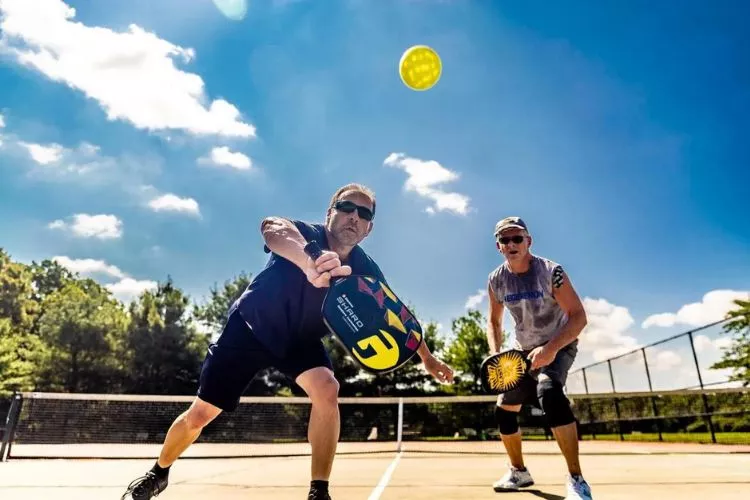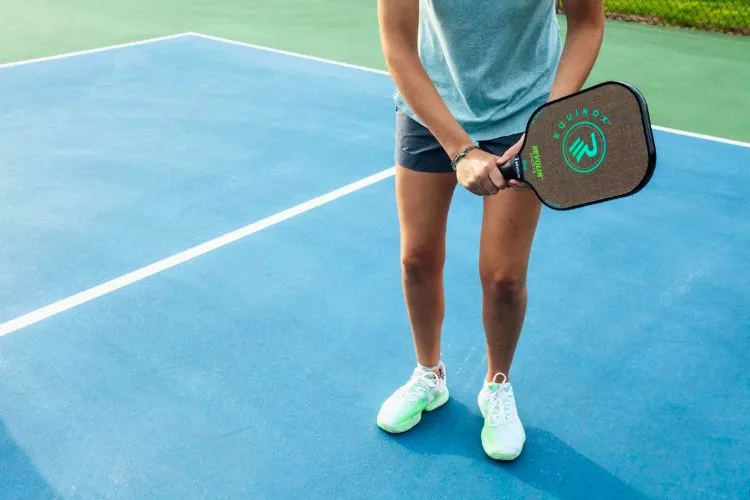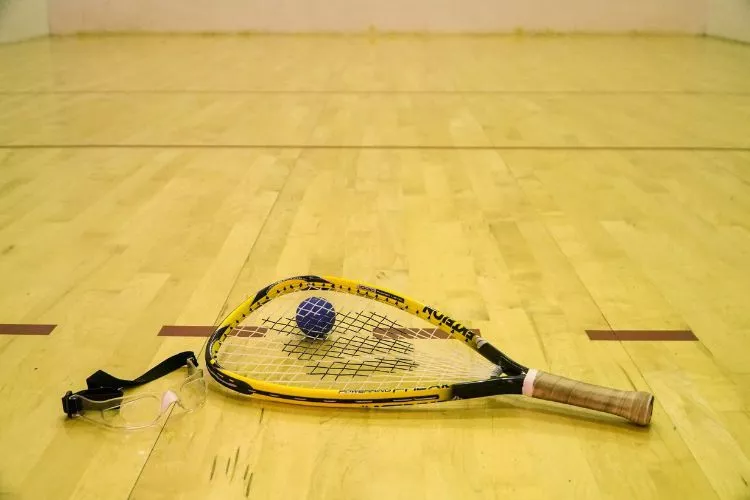In the vibrant world of sports where innovation and adaptability are often highly explored.
However, a question surfaces among both racquetball and pickleball enthusiasts: Can you use a racquetball racket for pickleball?
This article delves into the rules, specifications, and practicality of this crossover, offering critical insights for those looking to push the boundaries.

Whether you are a casual player aiming to cut costs, a seasoned pro exploring new techniques, or simply curious about the topic, we aim to provide a comprehensive guide to answer this intriguing question.
Can you use a racquetball racket for pickleball?
Yes, you can use a racquetball racket to play pickleball, but there are some considerations to keep in mind.
A racquetball racket is larger and heavier than a pickleball paddle, which may require adjustments in technique and swing.
Differences in the size and weight of the ball and the smaller court in pickleball might also impact gameplay when using a racquetball racket.
Despite these factors, it is possible to play pickleball with a racquetball racket, but some modifications to your gameplay may be necessary for maximum effectiveness.
Does Pickleball Racquet Matter?
Yes, your pickleball paddle significantly impacts your game. The type of paddle you use can influence your control, power, and the feel of the game.
The different materials used in paddle manufacturing — wood, composite, or graphite — all provide a unique play experience.

Additionally, paddle weight and size can affect the speed and accuracy of your shots. Lighter paddles offer better control, while heavier ones can pack more punch.
Therefore, choosing the right paddle that resonates with your playing style is crucial for optimal performance on the pickleball court.
What Racquet Sport is Similar to Pickleball?
Pickleball is often compared to other racquet sports such as tennis, badminton, and table tennis. It shares similar elements with these sports.
The court’s dimensions are akin to a badminton court, while the net and scoring system are similar to those in tennis.
Moreover, the hitting style, specifically the underhand serve and volley strategy, can be compared to table tennis.
What Makes Pickleball Different from Other Racket Sports?
Despite its similarities to other racket sports, pickleball harbors unique characteristics that set it apart.
The combination of the lightweight perforated plastic ball (akin to a whiffle ball), the distinctive square paddles, and the specific ‘non-volley zone’ or ‘kitchen’ rules, make pickleball a distinct sport.
Additionally, the combination of physicality and strategy, along with the triples or doubles format as the primary gameplay, differentiates pickleball from other racket sports.
The sport’s design also makes it exceptionally inclusive, allowing people of varied skills, ages, and abilities to enjoy and compete in the game.
Transitioning from racquetball to pickleball
Transiting from racquetball to pickleball offers the benefit of a new, dynamic sport. With practice and an open mind, adapting your gameplay from racquetball to pickleball can be an exciting challenge, opening doors to a sport booming with popularity worldwide.

Skills Transfer
Many skills transfer easily from racquetball to pickleball, which certainly eases the transition.
As both sports require striking a ball with a racket or paddle, common skills like player positioning, anticipation, shot selection, and reflexive responses are readily applicable.
Adaptation of Technique
However, some technical modifications are necessary to thrive in pickleball. Unlike racquetball, pickleball requires an underhand serve, emphasizing control over power. Learning to adjust your swing for this can improve your overall serve performance drastically.
Pickleball also encourages a softer, more controlled playstyle in many situations, due to the specific non-volley zone rules and smaller court size.
Engaging in ‘dink shots’ – soft shots designed to land in the opponent’s non-volley zone – is a strategic move often used in pickleball, as opposed to the power-hitting readily employed in racquetball.
Equipment and Rules Familiarization
One must also familiarize themselves with pickleball-specific equipment. Pickleball paddles are larger than racquetball rackets but smaller than tennis rackets.
Players also need to adjust to the smaller, lighter, perforated plastic ball used in pickleball as opposed to the smaller, solid rubber ball used in racquetball.
A significant part of the transition involves understanding and internalizing the unique rules of pickleball. This includes understanding the scoring system, the two-bounce rule in pickleball, and the unique non-volley zone or ‘kitchen’ rule.
Physicality and Fitness
On the physicality front, while both sports require agility, speed, and hand-eye coordination, the smaller court size in pickleball results in fewer aggressive movements and less physical stress than racquetball, making pickleball widely embraced by senior players.
Conclusion:
Using a racquetball racket for pickleball is possible but comes with its challenges.
Players may face adjustments to gameplay and technique due to differences in size, weight, and unique rules of pickleball.
Although the two sports share certain similarities, understanding and adapting to the intricacies of pickleball is a crucial factor in effectively transitioning between sports.
Embracing these differences and being prepared to fine-tune your approach offers an enjoyable experience and a novel way to explore the world of racquet sports.

Pickleball’s more than a game to me—it’s a passion. I write, sharing its highs and lows, the thrills and the lessons. Some tales might draw you to the court, while others give a hint of the game’s magic. So, curious about my journey? Ready to dive deep into the world of pickleball with me? Let’s go.
